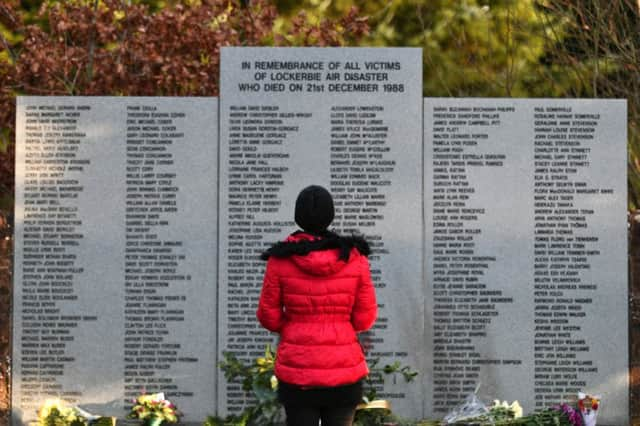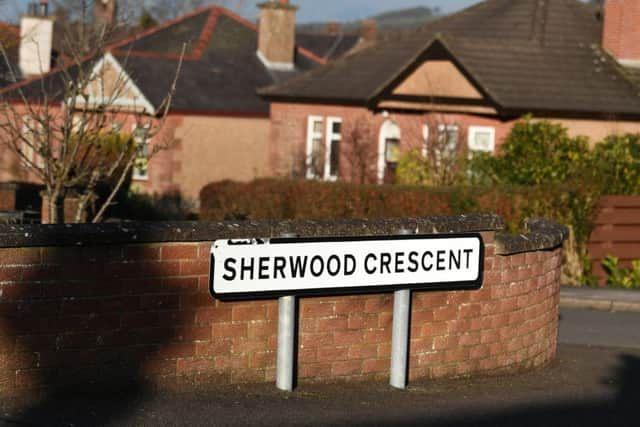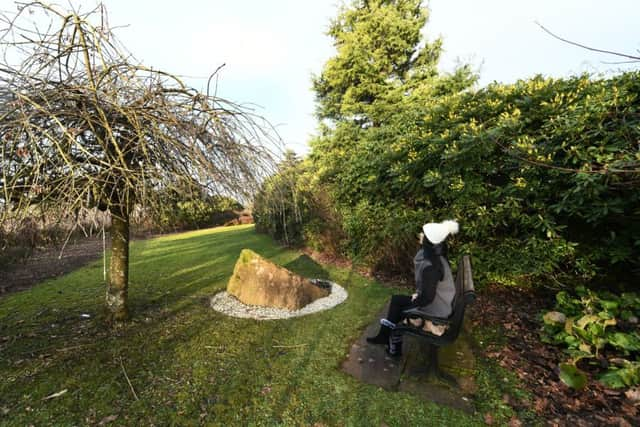Lockerbie anniversary: Three decades on and so many questions remain


A quiet residential street like thousands of others across Scotland, it is an address most will never have heard of.
But in a shaded area under a single tree stands a stone memorial with a plaque of remembrance to the former residents who died along with 259 others when a passenger plane exploded in the skies above Lockerbie three decades ago this week.
Advertisement
Hide AdAdvertisement
Hide AdIt was a night which marked the beginning of a chapter in Scottish history which, three decades on, has yet to fully conclude.


Thirty years on since the downing of Pan Am Flight 103, there remains as many questions as there have been answers about what took place that night.
From the bombing itself – the deadliest terrorist atrocity ever carried out in Britain – to the trial at Camp Zeist in the Netherlands and the jailing and subsequent release of Abdelbaset Ali Mohmed al-Megrahi, the night of 21 December, 1988 has come to define much that has happened since.
And while there are those satisfied of Megrahi’s guilt, there are others convinced of his innocence, and others still who believe the full truth of what took place may never be known.
Flight 103 was a regular transatlantic crossing, flying from Frankfurt to Detroit with stops in London and New York.


Some 38 minutes after take-off from Heathrow, 31,000ft above Lockerbie in the winter sky, a bomb packed in a suitcase exploded, blowing a hole in the Boeing 747, named Clipper Maid of the Seas. The explosion punctured the left side of the plane’s fuselage.
Investigators later found no evidence the crew had initiated emergency procedures – everything happened too fast.
The fuselage came down in Sherwood Crescent, leaving a huge impact crater and causing the British Geological Survey 15 miles away at Eskdalemuir to register a seismic event.
Advertisement
Hide AdAdvertisement
Hide AdThose killed on the ground were Dora and Maurice Henry, Jack and Rosalind Somerville and their children Paul, 13, and Lyndsey, ten, plus Mary Lancaster, 81, and Jean Murray, 82, as well as Kathleen and Thomas Flannigan and their daughter Joanne, ten.
The Flannigans’ 14-year-old son Steven had taken a bike intended as his sister’s Christmas present to be repaired in a neighbour’s garage. He survived, alongside his older brother David, 19. Tragically, their reprieve was short-lived: both men died in their 20s, David of heart failure in a Thai hotel and Steven after being hit by a train.
None of the plane’s 243 passengers or 16 crew survived the crash, with a total of 21 different nationalities among the dead. However, the vast majority were from the US. Thirty-five of those killed were students at Syracuse University in upstate New York, where a memorial to the dead now stands.
Others killed included Flora Swire, 23, from Worcestershire, who had recently graduated from medical school and was travelling to the US to spend Christmas with her boyfriend. Her father, Jim, became a leading campaigner seeking justice for those killed.
The youngest victim onboard the plane was two-month-old Brittany Williams, of New York; the oldest, Ibolya Gabor, 79, from Budapest, Hungary, who had survived two world wars and was travelling to Los Angeles to spend Christmas with her family. Other passengers included Bernt Carlsson, 50, the UN Commissioner for Namibia and Matthew Gannon, the CIA’s deputy station chief in Beirut.
There were a number of claims of responsibility in the immediate aftermath of the bombing, some far more credible than others.
A painstaking investigation carried out by Dumfries and Galloway Constabulary and the Air Accident Investigation Branch (AAIB) set about reconstructing the plane from fragments of wreckage scattered across more than 2,000 square kilometres.
The murder inquiry would see officers travel to 23 different countries, identifying victims, speaking to witnesses and gathering evidence.
Advertisement
Hide AdAdvertisement
Hide AdFrom the wreckage, fragments of a Samsonite suitcase were recovered which it was thought had been used to conceal the bomb.
Clothing from the same suitcase was found to have come from a shop in Malta owned by Tony Gauci, who later would controversially identify Megrahi as the man who had bought the items.
Megrahi, an intelligence officer, had a role as chief of security for Libyan Arab Airlines, allowing him regular travel to Malta where the company had an office. It was here, prosecutors would later argue, that Megrahi bought the clothing used to help hide the bomb which was to bring down Pan Am Flight 103. Using fake passports, he was also able to travel to Zurich where the timer for the bomb was made.
The police investigation, which had taken around 15,000 witness statements, eventually led to Libya, and both Megrahi and his compatriot, Al Amin Khalifa Fhimah, were indicted for the bombing by the Lord Advocate and US attorney-general in 1991.
It was to be a further eight years, however, amid heavy pressure in the form of UN sanctions, before Libyan leader Muammar Gaddafi agreed to hand over the two men for trial.
After protracted negotiations, it was decided the two Libyans would be tried under Scots law, but at a neutral location. Nelson Mandela met with Jim Swire, who became a spokesman for the UK families, and helped broker the deal. A former US Air Force base at Camp Zeist near Utrecht in the Netherlands was chosen and the trial got under way on 3 May, 2000 – nearly 12 years after the bombing.
On 31 January the following year, Megrahi was convicted of murder by a panel of three Scottish judges and sentenced to a minimum of 20 years behind bars. Fhimah was acquitted. But if observers thought that was to be the end of the legal case, they were wrong – it was only just beginning.
Megrahi was sent to Barlinnie prison in Glasgow, his wife and children eventually moving to a home in the upmarket suburb of Newton Mearns bought by Colonel Gaddafi’s son, Saif. Megrahi’s sons enrolled in local schools, where only a small number of teachers were aware of their true identity.
Advertisement
Hide AdAdvertisement
Hide AdIn Barlinnie, Megrahi was kept segregated from the other inmates. His conditions were criticised by Mandela during a visit to the jail, but efforts were made to provide him with halal food, leading to his area of the Victorian prison being dubbed “Gaddafi’s Café” by other prisoners. He was later moved to Greenock Prison, where he was spend the rest of his time in custody with other inmates serving life sentences.
An initial legal appeal was refused, but in September 2003 Megrahi applied to the Scottish Criminal Cases Review Commission (SCCRC) asking for a review of his conviction. Nearly four years later, the SCCRC announced it would be referring the case to the Court of Criminal Appeal after it found Megrahi “may have suffered a miscarriage of justice”.
The Libyan applied to have the appeal dropped, however, shortly before it emerged he was to be controversially released on compassionate grounds by then Justice Secretary Kenny MacAskill. Despite a doctor’s assessment that Megrahi, who had terminal prostate cancer, had only three months to live, he would survive for a further three years after his return to Libyan, his life reportedly extended by a drug which at that point was not available to Scottish cancer sufferers on the NHS.
Despite Megrahi’s death, attempts continue to overturn his conviction. Earlier this year, the SCCRC began reviewing his conviction for a second time, saying it believed Megrahi had abandoned his earlier appeal because he thought it would result in him being released from prison and allowed to return home to Libya.
Back in Lockerbie, only the memorials to the dead remain as visible signs of the terror that came from the skies one December night 30 years ago. But while the houses of Sherwood Crescent have been rebuilt and life has go on, the story appears far from finished.